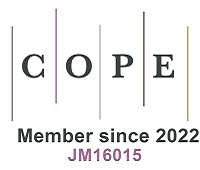REFERENCES
2. Takahashi T, Izumi K, Ishikawa T, Kikuta S. Evidence for a trimer in the √3 × √3 -Bi structure on the Si(111) surface by X-ray diffraction under the nearly normal incidence condition. Surf Sci Lett 1987;183:L302-12.
3. Takahashi T, Nakatani S, Ishikawa T, Kikuta S. Surface structure analysis of Si(111)3×3-Bi by X-ray diffraction - Approach to the solution of the phase problem. Surf Sci Lett 1987;191:L825-34.
4. Park CY, Abukawa T, Higashiyama K, Kono S. Analysis of the atomic structure of the Si(111)√3×√3-Bi surface by X-ray photoelectron diffraction. Jpn J Appl Phys 1987;26:L1335.
5. Shioda R, Kawazu A, Baski AA, Quate CF, Nogami J. Bi on Si(111): two phases of the √3 × √3 surface reconstruction. Phys Rev B 1993;48:4895-8.
6. Park C, Bakhtizin RZ, Tomihiro Hashizume TH, Toshio Sakurai TS. Scanning tunneling microscopy of √3×√3-Bi reconstruction on the Si(111) surface. Jpn J Appl Phys 1993;32:L290.
7. Park C, Bakhtizin RZ, Tomihiro Hashizume TH, Toshio Sakurai TS. Structure of the Bi/Si(111) surface by field-ion scanning tunneling microscopy. Jpn J Appl Phys 1993;32:1416.
8. Bakhtizin RZ, Park C, Hashizume T, Sakurai T. Atomic structure of Bi on the Si(111) surface. J Vac Sci Technol B 1994;12:2052-4.
9. Roesler JM, Sieger MT, Miller T, Chiang TC. New experimental technique of photoelectron holography applied to Bi trimers on Si(111). Surf Sci 1997;380:L485-90.
10. Cheng C, Kunc K. Structure and stability of Bi layers on Si(111) and Ge(111) surfaces. Phys Rev B 1997;56:10283-8.
11. Roesler JM, Miller T, Chiang TC. Photoelectron holography studies of Bi on Si(111). Surf Sci 1998;417:L1143-7.
12. Nakatani S, Takahashi T, Kuwahara Y, Aono M. Use of x-ray reflectivity for determining the Si(111)√3×√3-Bi surface structures. Phys Rev B 1995;52:R8711-4.
13. Miwa RH, Schmidt TM, Srivastava GP. Bi covered Si(111) surface revisited. J Phys Condens Matter 2003;15:2441.
14. Yaginuma S, Nagao T, Sadowski JT, et al. Origin of flat morphology and high crystallinity of ultrathin bismuth films. Surf Sci 2007;601:3593-600.
15. Wan KJ, Guo T, Ford WK, Hermanson JC. Initial growth of Bi films on a Si(111) substrate: two phases of √3 × √3 low-energy-electron-diffraction pattern and their geometric structures. Phys Rev B 1991;44:3471-4.
16. Wan KJ, Guo T, Ford WK, Hermanson JC. Low-energy electron diffraction studies of Si(111)-(
17. Woicik JC, Franklin GE, Liu C, et al. Structural determination of the Si(111) √3×√3-Bi surface by x-ray standing waves and scanning tunneling microscopy. Phys Rev B 1994;50:12246-9.
18. Kuzumaki T, Shirasawa T, Mizuno S, Ueno N, Tochihara H, Sakamoto K. Re-investigation of the Bi-induced Si(111)-(
19. Berntsen MH, Götberg O, Tjernberg O. Reinvestigation of the giant Rashba-split states on Bi-covered Si(111). Phys Rev B 2018;97:125148.
20. Chi L, Nogami J, Singh CV. Bias dependence and defect analysis of Bi on Si(111)
21. Hsieh SC, Hsu CH, Chen HD, Lin DS, Chuang FC, Hsu PJ. Extended α-phase Bi atomic layer on Si(111) fabricated by thermal desorption. Appl Surf Sci 2020;504:144103.
22. Bychkov YA, Rashba ÉI. Properties of 2D electron gas with lifted spectral degeneracy. JETP Lett 1984;39:78-81. Available from: http://jetpletters.ru/ps/1264/article_19121.pdf. [Last accessed on 7 Apr 2024]
23. LaShell S, McDougall BA, Jensen E. Spin splitting of an Au(111) surface state band observed with angle resolved photoelectron spectroscopy. Phys Rev Lett 1996;77:3419-22.
24. Koroteev YM, Bihlmayer G, Gayone JE, et al. Strong spin-orbit splitting on Bi surfaces. Phys Rev Lett 2004;93:046403.
25. Ast CR, Henk J, Ernst A, et al. Giant spin splitting through surface alloying. Phys Rev Lett 2007;98:186807.
26. Reis F, Li G, Dudy L, et al. Bismuthene on a SiC substrate: a candidate for a high-temperature quantum spin Hall material. Science 2017;357:287-90.
27. Vogt P, De Padova P, Quaresima C, et al. Silicene: compelling experimental evidence for graphenelike two-dimensional silicon. Phys Rev Lett 2012;108:155501.
28. Stpniak-dybala A, Dyniec P, Kopciuszyski M, Zdyb R, Jałochowski M, Krawiec M. Planar silicene: a new silicon allotrope epitaxially grown by segregation. Adv Funct Mater 2019;29:1906053.
29. De Padova P, Avila J, Resta A, et al. The quasiparticle band dispersion in epitaxial multilayer silicene. J Phys Condens Matter 2013;25:382202.
30. De Padova P, Vogt P, Resta A, et al. Evidence of Dirac fermions in multilayer silicene. Appl Phys Lett 2013;102:163106.
31. Vogt P, Capiod P, Berthe M, et al. Synthesis and electrical conductivity of multilayer silicene. Appl Phys Lett 2014;104:021602.
32. Grazianetti C, Cinquanta E, Tao L, et al. Silicon nanosheets: crossover between multilayer silicene and diamond-like growth regime. ACS Nano 2017;11:3376-82.
33. De Padova P, Ottaviani C, Quaresima C, et al. 24 h stability of thick multilayer silicene in air. 2D Mater 2014;1:021003.
34. De Padova P, Generosi A, Paci B, et al. Multilayer silicene: clear evidence. 2D Mater 2016;3:031011.
35. De Padova P, Feng H, Zhuang J, et al. Synthesis of multilayer silicene on Si(111)√3 × √3-Ag. J Phys Chem C 2017;121:27182-90.
36. De Padova P, Generosi A, Paci B, et al. New findings on multilayer silicene on Si(111)√3×√3R30°-Ag template. Materials 2019;12:2258.
37. Garagnani D, De Padova P, Ottaviani C, et al. Evidence of sp2-like hybridization of silicon valence orbitals in thin and thick Si grown on α-phase Si(111)√3 × √3R30°-Bi. Materials 2022;15:1730.
38. Berghaus T, Brodde A, Neddermeyer H, Tosch S. STM observation of a new reconstruction on narrow Si(111) terraces. Surf Sci 1987;181:340-5.
39. Fan WC, Ignatiev A, Huang H, Tong SY. Observation and structural determination of (√3×√3)R30° reconstruction of the Si(111) surface. Phys Rev Lett 1989;62:1516-9.
40. Xu YX, Cao XR, Xu LH, Zheng F, Wu SQ, Zhu ZZ. Silicene adsorption on the bismuth-passivated Si(111)
41. Becker RS, Golovchenko JA, McRae EG, Swartzentruber BS. Tunneling images of atomic steps on the Si(111)7 × 7 surface. Phys Rev Lett 1985;55:2028-31.










